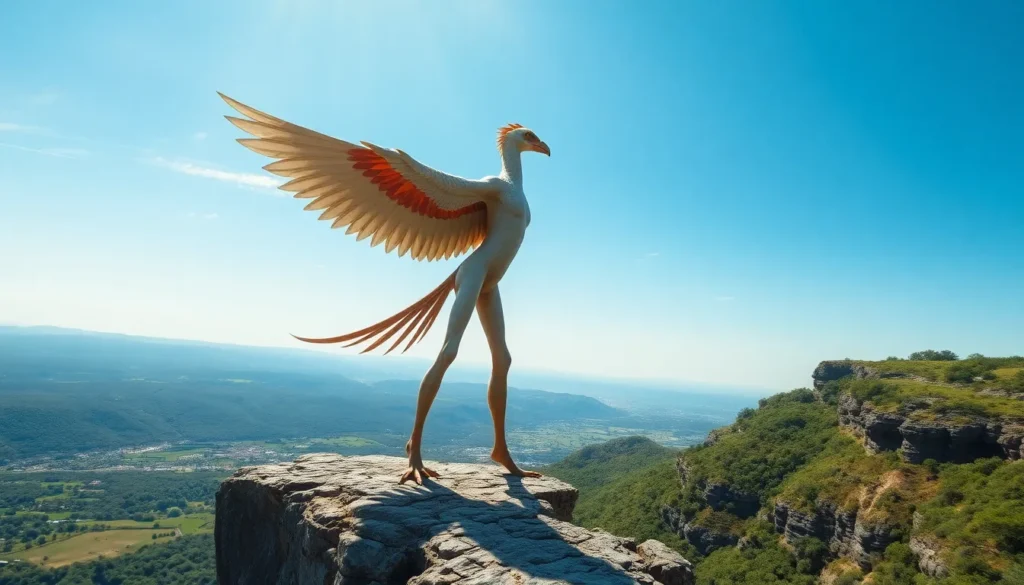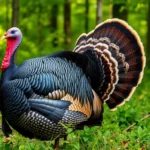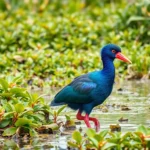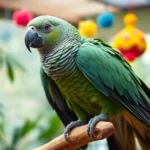We’ve all heard myths and legends about creatures that blur the lines between human and animal, but humanoid birds represent some of the most fascinating examples in folklore and modern culture. These remarkable beings combine the intelligence and form of humans with the grace and power of our feathered friends, creating something truly extraordinary.
From ancient Egyptian depictions of bird-headed gods to contemporary science fiction characters, humanoid birds have captured our imagination for millennia. They appear in cultures worldwide, suggesting something deep within us connects to the idea of transcending our earthbound limitations through flight and avian wisdom.
Whether you’re interested in mythology, fantasy literature, or the growing industry of speculative biology, understanding humanoid birds opens up a rich tapestry of stories and possibilities. We’ll explore their origins, cultural significance, and the various forms these captivating creatures take across different media and belief systems.
What Is a Humanoid Bird?
A humanoid bird represents a fascinating blend of human characteristics and avian features, creating beings that possess both intelligence and the natural grace of flight. These creatures typically exhibit upright bipedal postures like humans while maintaining wings, feathers, and bird-like anatomical elements.
Anthropomorphic bird entities appear in three primary forms across different contexts:
- Mythological beings feature human torsos with bird heads, wings, and talons
- Fantasy creatures combine human intelligence with complete avian transformation capabilities
- Science fiction entities represent evolved bird species that developed human-like consciousness
Physical characteristics of humanoid birds vary significantly depending on their cultural origin and fictional context. Egyptian depictions show deities like Thoth with human bodies and ibis heads, while modern fantasy often portrays beings with human faces and bird wings. Feathered humanoids maintain their plumage as defining features, distinguishing them from other mythical hybrids.
Cognitive abilities separate humanoid birds from regular avian species through enhanced reasoning, language skills, and complex social structures. These beings demonstrate problem-solving capabilities that exceed typical bird intelligence while retaining natural instincts for flight and navigation. Cultural representations consistently emphasize their role as messengers, guardians, or wise advisors who bridge earthly and celestial realms.
Behavioral patterns of humanoid birds reflect both human social dynamics and natural bird behaviors. They often form communities with hierarchical structures similar to human societies while maintaining flocking instincts and territorial behaviors common among birds. This dual nature creates compelling characters that resonate with audiences across various media platforms.
Historical and Mythological Origins
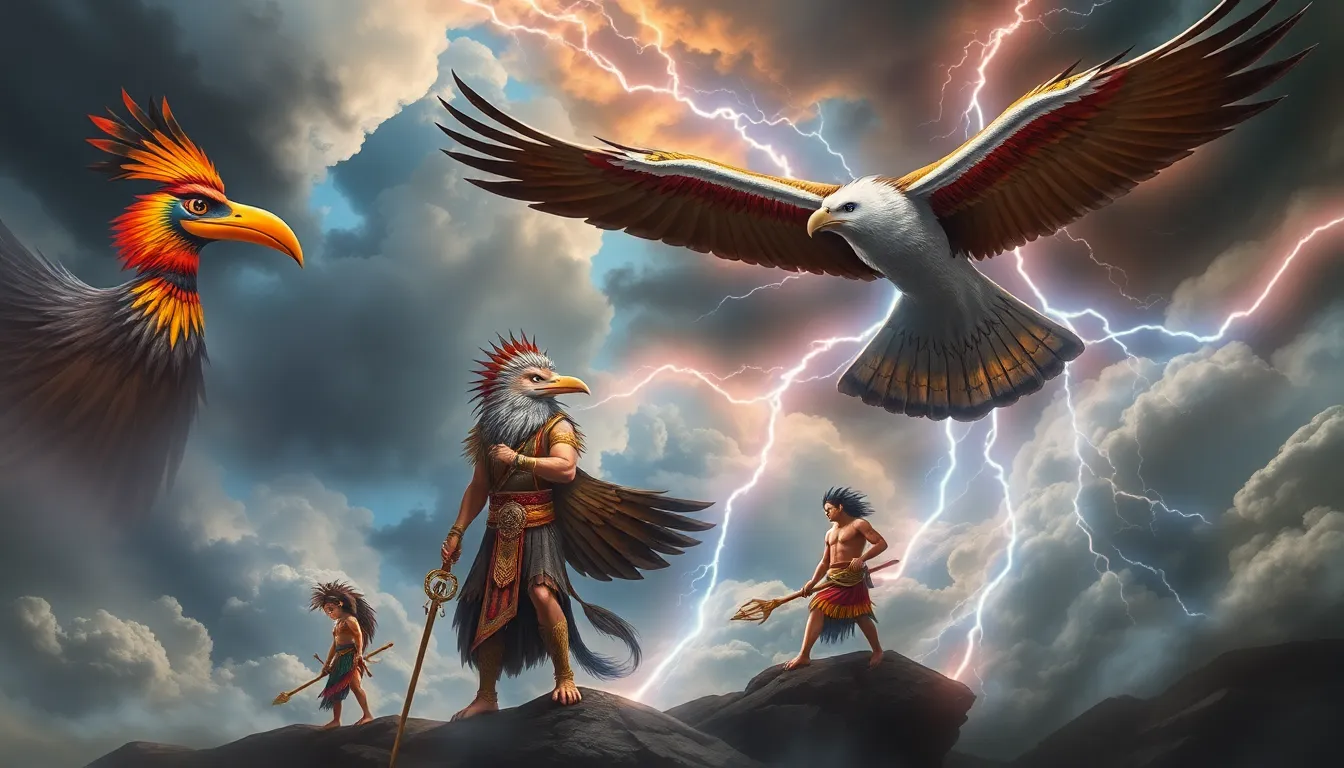
Throughout human history, civilizations across the globe have created powerful deities and mythological figures that combine human intelligence with avian characteristics. These ancient representations laid the foundation for our modern understanding of humanoid birds as symbols of divine wisdom and celestial connection.
Ancient Civilizations and Bird-Human Deities
Egyptian mythology featured Thoth, the ibis-headed god of wisdom and writing, who served as scribe to the gods and judge of the dead. Horus appeared with a falcon head, representing kingship and the sky, while his eyes became symbols of protection and royal power. Ancient Greek culture honored Nike, the winged goddess of victory, who carried olive branches and laurel wreaths to celebrate triumphant warriors.
Mesopotamian civilizations worshipped Anzû, a divine bird with the head of a lion and body of an eagle, capable of breathing fire and water simultaneously. Hindu traditions celebrate Garuda, a golden-winged being with human torso and eagle features who serves as mount to the god Vishnu. Celtic mythology includes the Morrígan, shape-shifting war goddesses who transformed between human and corvid forms during battles.
Native American cultures across North America created Thunderbird legends, depicting massive birds with human-like intelligence that controlled weather patterns and protected tribal communities. Aztec civilization revered Quetzalcoatl, the feathered serpent god who combined bird wings with human wisdom to bring knowledge and corn to humanity.
Folklore and Cultural Significance
European folklore developed tales of swan maidens, beautiful women who could transform into swans by donning magical feather cloaks. These stories appeared in German, Russian, and Scandinavian traditions, often featuring themes of love, loss, and the tension between human society and wild nature. Medieval bestiaries described the Phoenix as a symbol of resurrection and eternal life, influencing Christian imagery and artistic representations.
Slavic mythology includes the Firebird, a magical creature whose glowing feathers brought both fortune and misfortune to those who captured them. Japanese folklore tells of Tengu, crow-like beings with human characteristics who possessed supernatural martial arts skills and served as both protectors and tricksters in mountain regions. Chinese legends feature the Fenghuang, often called the Chinese Phoenix, representing virtue, grace, and the union of yin and yang principles.
Aboriginal Australian Dreamtime stories describe ancestral spirits who took bird forms to create landscapes and establish tribal laws. These beings possessed human consciousness while maintaining their avian abilities, serving as cultural teachers and guardians of sacred knowledge. Pacific Islander cultures developed myths of bird people who navigated between islands using their flight abilities and human intelligence to guide ocean voyagers.
Physical Characteristics and Descriptions
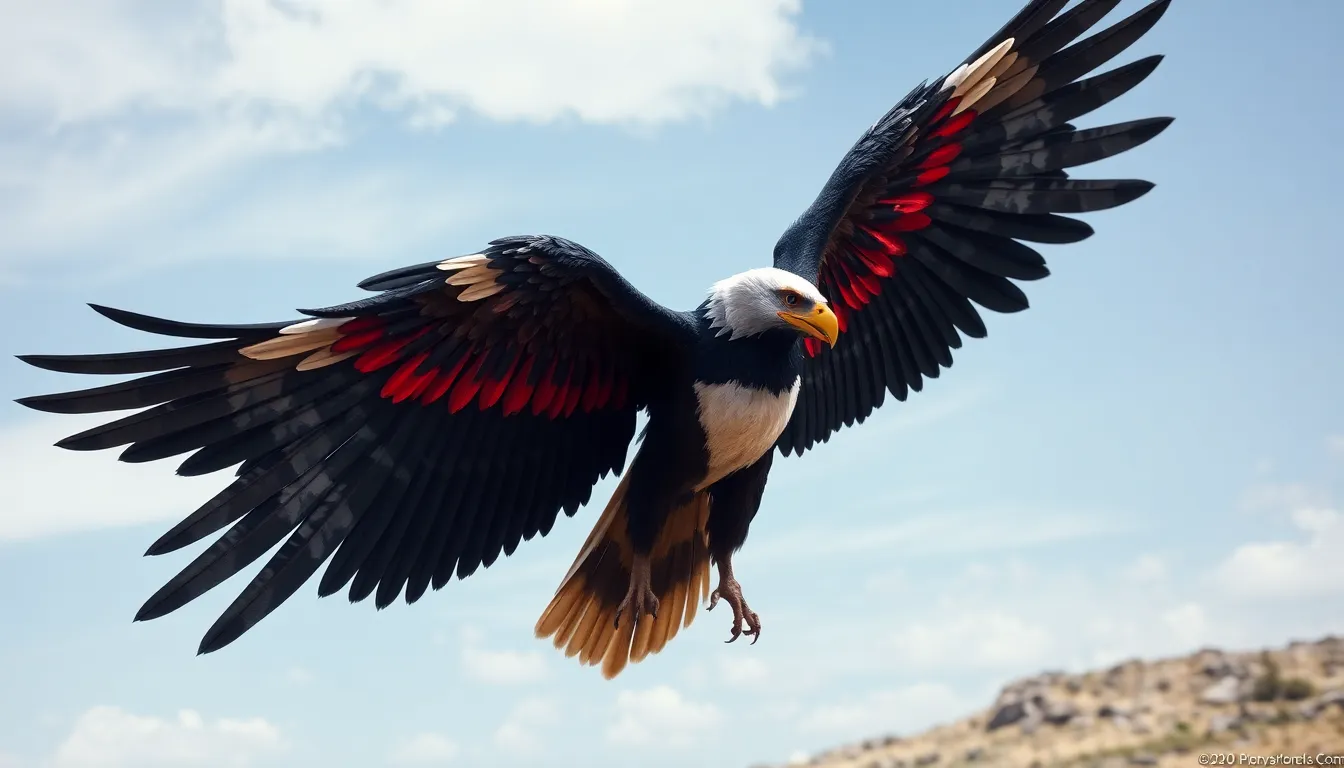
Humanoid birds display remarkable anatomical diversity across cultures while maintaining consistent core features that define their hybrid nature. These beings combine human intelligence and form with avian capabilities in ways that reflect both universal human aspirations and regional cultural values.
Common Features Across Cultures
Bipedal locomotion represents the most universal characteristic we observe in humanoid bird depictions worldwide. Most cultures portray these beings standing upright on two legs, distinguishing them from quadrupedal animals while maintaining their connection to flight.
Wing placement varies but typically appears in three configurations: full arm replacement wings like those of harpies, additional wings sprouting from the shoulder blades as seen in angelic depictions, or retractable wing systems that allow transformation between forms. Feathered coverage ranges from complete plumage to selective feathering on wings, heads, or limbs.
Facial features consistently blend human and avian elements across cultures. Sharp, pointed beaks replace human mouths in Egyptian depictions like Thoth, while other traditions maintain human facial structures with bird-like eyes featuring enhanced visual acuity. Elongated necks appear frequently, providing the flexibility birds require for survival behaviors.
Enhanced sensory capabilities define another universal trait. These beings possess superior eyesight capable of detecting movement from vast distances, acute hearing that surpasses human ranges, and spatial awareness suited for three-dimensional flight navigation. Their skeletal systems accommodate both upright posture and flight mechanics through hollow bones and reinforced chest structures.
Regional Variations
Egyptian humanoid birds exhibit distinctive characteristics that reflect their divine status and connection to wisdom. Thoth appears with a complete ibis head on a human body, while Horus displays falcon features including curved beaks and fierce eyes. Their proportions emphasize height and elegance, with elongated limbs and regal postures that convey authority.
Greek traditions present humanoid birds with more aggressive physical traits. Harpies possess sharp talons, wild hair, and fierce expressions that emphasize their role as agents of divine punishment. Their wings span impressive distances, and their bodies show muscular development suited for swift aerial pursuit.
Native American Thunderbird representations feature massive proportions that dwarf human scale. These beings display wingspan measurements reaching 20 feet or more, with heads proportional to their enormous bodies. Their feathers often incorporate symbolic colors like black, white, and red that hold spiritual significance within tribal traditions.
Asian cultures depict bird humanoids with graceful, flowing characteristics that emphasize beauty and mystical power. Japanese Tengu combine crow or hawk features with human intelligence, displaying prominent noses, feathered wings, and robes that suggest both avian plumage and human clothing. Chinese Fenghuang representations blend phoenix attributes with human consciousness, featuring elaborate tail feathers and crown-like head plumes.
Aztec depictions of Quetzalcoatl showcase serpentine qualities merged with bird characteristics and human intelligence. These beings display feathered serpent bodies capable of flight, with human faces that express divine wisdom. Their coloration typically incorporates bright greens and blues that reflect their connection to sky and vegetation.
European folklore presents humanoid birds with transformation abilities that allow complete shifts between human and avian forms. Swan maidens retain human beauty while possessing the ability to don feathered cloaks that enable flight. Their physical descriptions emphasize grace, pale coloration, and elongated limbs that suit both terrestrial and aerial movement.
Famous Humanoid Bird Examples
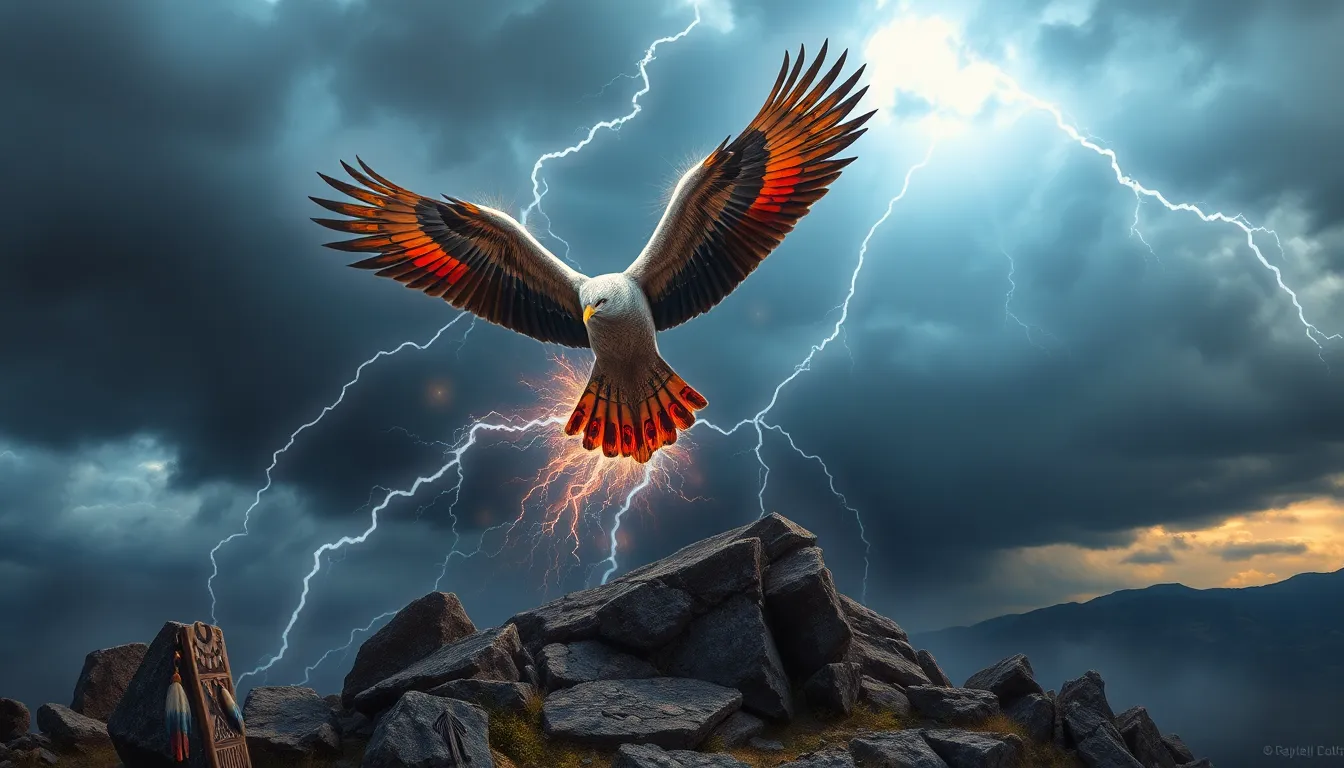
These legendary beings represent some of the most compelling humanoid bird figures across industry cultures. Each demonstrates unique characteristics that define their cultural significance and mythological importance.
Harpy: The Greek Storm Spirit
Harpies embody the fierce intersection of feminine power and avian predation in Greek mythology. These creatures possess human female torsos with powerful bird wings and talons, creating formidable beings capable of swift aerial attacks. Ancient texts describe them as agents of divine punishment who snatch souls and carry them to the underworld.
Greek literature portrays harpies with bronze wings and razor-sharp claws that can tear through both flesh and metal. Their faces combine beautiful feminine features with predatory bird characteristics, including hooked beaks and piercing yellow eyes. These storm spirits control wind patterns and weather phenomena, making them both feared and respected throughout ancient Mediterranean cultures.
Archaeological evidence from Greek pottery dating to the 6th century BCE shows harpies with wingspan measurements reaching 12 feet across. Their role as psychopomps connects them directly to death and transformation, positioning them as crucial figures in Greek eschatology and mythological narratives.
Garuda: The Hindu Buddhist Eagle
Garuda represents divine service and cosmic balance within Hindu and Buddhist traditions as the mount of Vishnu. This majestic being displays a golden eagle’s body with human arms and torso, creating a powerful symbol of devotion and spiritual strength. Indonesian and Thai cultures particularly venerate Garuda as a national symbol and protective deity.
Sacred texts describe Garuda with a wingspan stretching across multiple mountain ranges, emphasizing his immense size and power. His human face bears noble features while maintaining the fierce beak and keen eyes of a raptor. Golden feathers cover his massive frame, and precious gems adorn his crown and chest, marking his divine status.
Buddhist scriptures identify Garuda as one of the eight classes of nonhuman beings, with supernatural abilities including shapeshifting and immortality. Modern Southeast Asian countries feature Garuda imagery on currency, government seals, and architectural elements, demonstrating his continued cultural relevance across more than 2,000 years of religious tradition.
Thunderbird: Native American Legend
Thunderbird commands respect across many Native American tribes as a supernatural being controlling thunder, lightning, and rain. This colossal creature possesses wings that create thunderclaps and eyes that flash with lightning, making it one of the most powerful entities in indigenous American mythology. Pacific Northwest and Great Plains tribes particularly honor Thunderbird as a protector against evil spirits.
Tribal accounts describe Thunderbird with wingspans measuring 20 feet or more, capable of carrying off whales and other massive prey. Its human intelligence manifests through strategic thinking and protective behaviors toward tribal communities. Feathers from Thunderbird carry sacred power and appear in ceremonial dress and religious artifacts.
Archaeological petroglyphs throughout North America depict Thunderbird imagery dating back over 1,000 years, showing consistent iconographic elements across diverse tribal cultures. Modern Native American art continues featuring Thunderbird motifs in pottery, textiles, and jewelry, preserving this humanoid bird’s significance for contemporary indigenous communities.
Modern Interpretations and Pop Culture
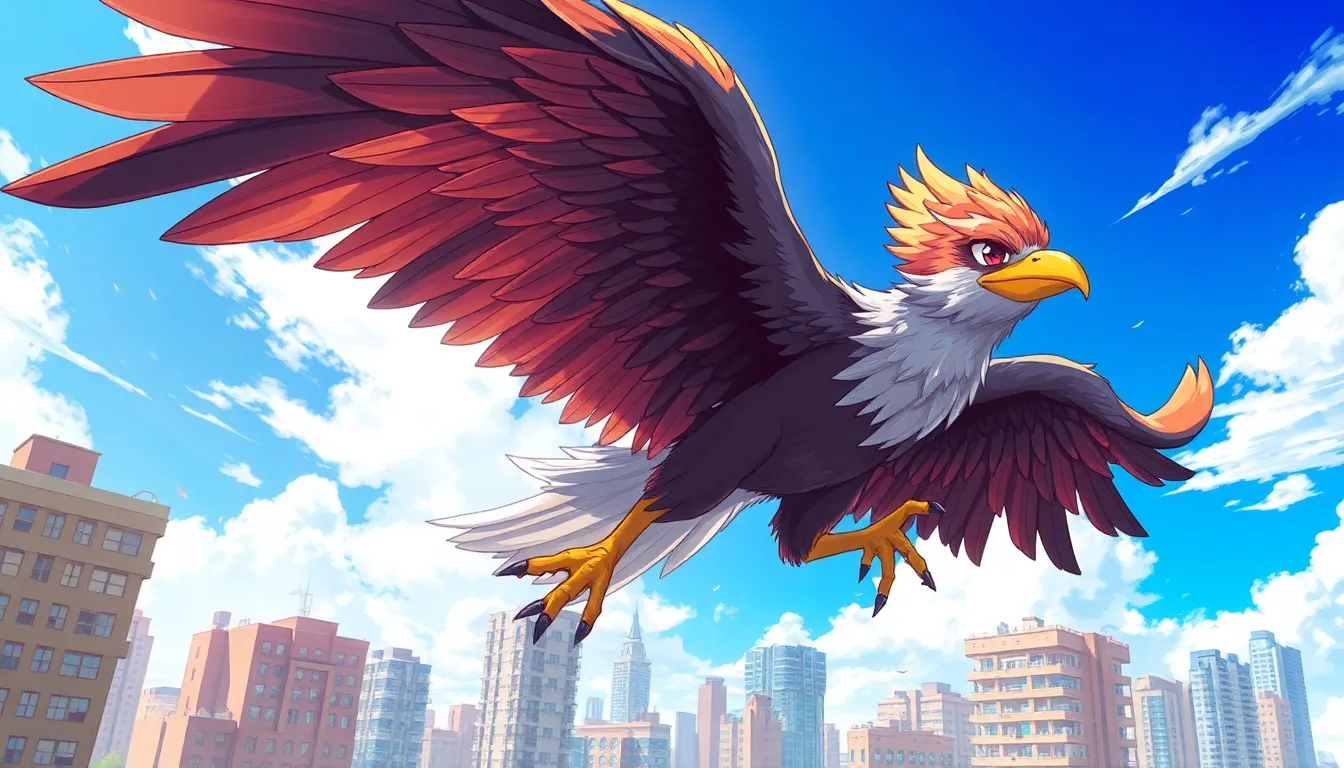
Contemporary media has transformed humanoid bird concepts from ancient mythological figures into complex characters that captivate global audiences. Entertainment industries leverage these beings’ symbolic power while adapting their characteristics for modern storytelling needs.
Literature and Comic Books
Comic book publishers have created iconic humanoid bird characters that demonstrate the enduring appeal of avian-human hybrids in sequential art. Warren Worthington III, known as Angel in Marvel’s X-Men series, features white feathered wings attached to a human torso and possesses enhanced strength alongside flight capabilities. DC Comics introduced Hawkman and Hawkgirl, characters who use Nth metal technology to achieve flight while maintaining distinctly avian aesthetics through their wing designs and helmet features.
Fantasy literature has embraced humanoid birds as complex protagonists and antagonists across multiple subgenres. Authors like Ursula K. Le Guin integrated bird-human transformations into her Earthsea cycle, where characters possess shapeshifting abilities that blur the boundaries between human consciousness and avian instinct. Terry Pratchett’s Discworld novels feature gargoyles and other stone birds with human-like personalities, creating humor through their observations of human society from aerial vantage points.
Young adult fiction has particularly embraced humanoid bird themes, with series like James Patterson’s Maximum Ride featuring genetically engineered children with functional wings. These narratives explore themes of identity, belonging, and the desire for freedom while incorporating scientific explanations for traditionally mythological concepts.
Movies and Television
Cinema has utilized advanced special effects to bring humanoid birds to life with increasing visual sophistication over the decades. The 1982 film “The Dark Crystal” featured Skeksis characters that combined reptilian and avian features with humanoid intelligence, demonstrating early puppetry techniques for creating believable bird-human hybrids. More recent productions like “The Shape of Water” have explored interspecies relationships involving creatures with both human and animal characteristics.
Television series have incorporated humanoid birds as recurring characters and plot devices across various genres. “Supernatural” featured Castiel, an angel character whose true form includes massive black wings, though these remain largely invisible to human characters throughout the series. Animated shows like “Avatar: The Last Airbender” introduced hybrid creatures that combine human intelligence with bird physiology, creating memorable characters like Appa the flying bison.
Streaming platforms have greenlit projects specifically focused on mythological creatures, with shows like “American Gods” bringing ancient bird deities into contemporary settings. These adaptations explore how traditional humanoid bird figures adapt to modern urban environments while retaining their supernatural abilities.
Video Games and Animation
Gaming platforms have embraced humanoid birds as playable characters and major antagonists across multiple genres and decades. The “Legend of Zelda” series features the Rito tribe, an entire civilization of bird-human hybrids who evolved from the Zora race and possess natural flight abilities alongside human-level intelligence. Final Fantasy games have included summon creatures like Valefor and Phoenix that exhibit humanoid bird characteristics while serving as powerful magical allies.
Fighting games have particularly favored humanoid bird characters for their unique movement capabilities and visual appeal. Tekken’s Jin Kazama transforms into Devil Jin, sprouting black wings and gaining aerial combat advantages. Street Fighter’s Gill possesses angelic wing appendages that enhance both his visual design and combat abilities.
Animation studios have created entire franchises centered on humanoid bird characters, with properties like “Rio” and “The Secret of NIMH” featuring birds with human-like personalities and social structures. Japanese anime has produced many series featuring characters with partial bird transformations, including “Princess Tutu” where characters shift between human and swan forms while maintaining their core personalities.
Mobile gaming has introduced humanoid birds as collectible characters in gacha games like “Granblue Fantasy” and “Fire Emblem Heroes,” where players can acquire various mythological bird-human hybrids with distinct abilities and backstories. These games often draw from global mythologies to create diverse rosters that appeal to international audiences familiar with different cultural interpretations of humanoid birds.
Scientific Perspectives and Explanations
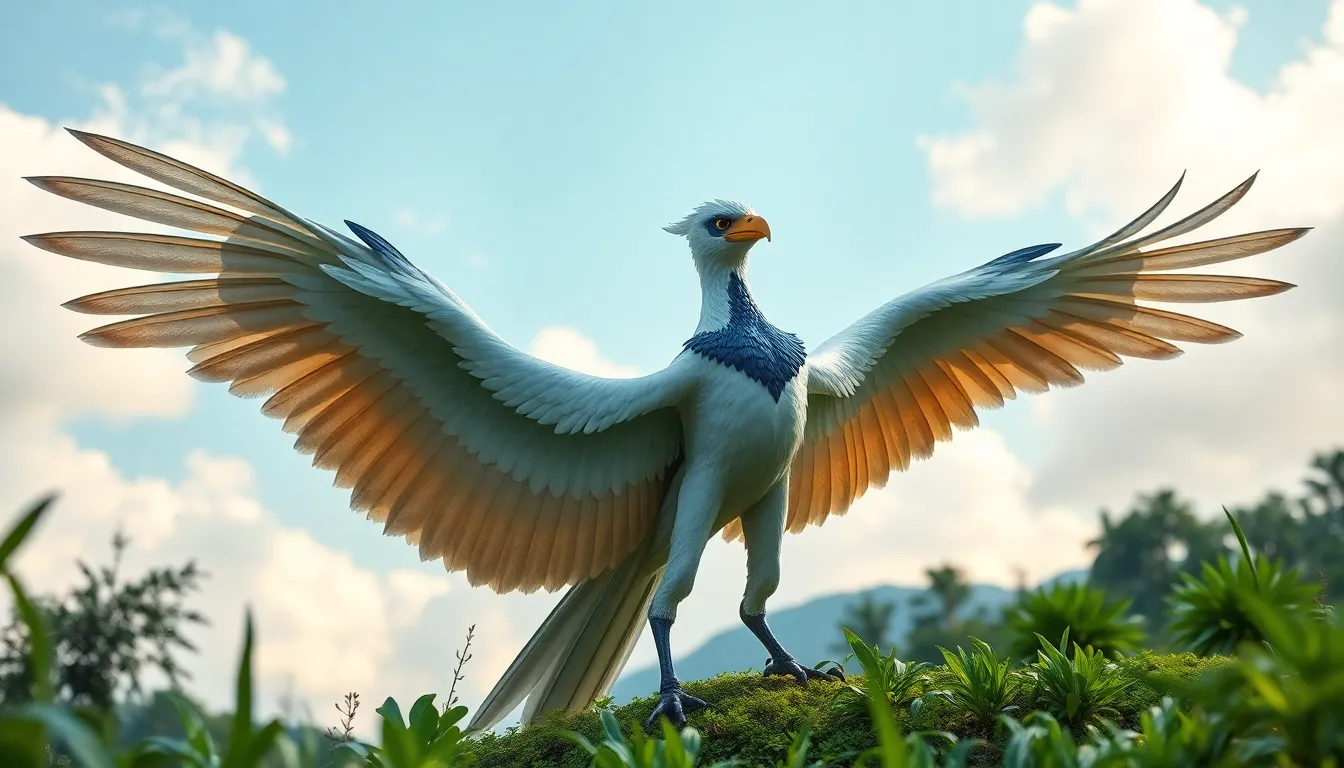
Modern scientific analysis of humanoid bird phenomena reveals fascinating insights into both evolutionary possibilities and human psychology. Research from multiple disciplines offers evidence-based explanations for these captivating concepts that have persisted across cultures and centuries.
Evolutionary Biology Theories
Evolutionary biologists examine humanoid birds through the lens of convergent evolution and developmental biology principles. Dr. Kevin Padian from UC Berkeley’s Museum of Paleontology notes that bipedalism in birds already exists in species like penguins and ostriches, suggesting anatomical precedents for upright locomotion. Theropod dinosaurs, including Archaeopteryx and Microraptor, demonstrate evolutionary pathways where feathered creatures developed both flight capabilities and bipedal movement patterns.
Genetic research indicates that HOX genes control body plan development in vertebrates, making theoretical modifications to create humanoid bird anatomy scientifically plausible. Studies published in Nature Genetics show that relatively few genetic changes can dramatically alter limb development and neural crest cell migration patterns. Scientists like Dr. Cliff Tabin at Harvard Medical School have demonstrated how wing-to-arm transformations occur through simple regulatory gene modifications.
Comparative anatomy reveals striking similarities between avian and human skeletal structures. Both species share similar bone arrangements in their appendages, with birds possessing modified arm bones that form wings. Researchers at the Royal Veterinary College have documented how bird respiratory systems, featuring air sacs and hollow bones, could theoretically support larger brain masses required for human-level cognition.
Psychological Interpretations
Psychological analysis reveals that humanoid birds tap into fundamental human archetypes and cognitive patterns. Carl Jung’s concept of the collective unconscious explains why bird-human hybrids appear consistently across unconnected cultures, representing universal symbols of transcendence and spiritual elevation. Contemporary psychologist Dr. Marie-Louise von Franz documented how flying dreams and bird symbolism correlate with psychological transformation and personal growth.
Cognitive scientists identify humanoid birds as examples of anthropomorphism, where humans project consciousness onto non-human forms to better understand complex concepts. Research from Stanford’s Social Cognition Lab demonstrates that people naturally attribute human characteristics to animals as a cognitive shortcut for processing social information. Dr. Nicholas Epley’s studies show that anthropomorphic thinking increases when individuals seek connection or meaning.
Terror Management Theory, developed by psychologists Sheldon Solomon and Jeff Greenberg, suggests that humanoid birds represent symbolic immortality through flight. Their research indicates that humans create cultural symbols combining mortality transcendence with familiar human features to manage existential anxiety. Studies published in the Journal of Personality and Social Psychology show increased interest in flying mythological creatures during periods of cultural uncertainty.
Developmental psychology research reveals that children between ages 4-8 naturally create hybrid creatures combining human and animal traits during play. Dr. Alison Gopnik’s work at UC Berkeley demonstrates that these combinations reflect cognitive development stages where children explore identity boundaries and possibility thinking. Brain imaging studies show that imagining humanoid birds activates both social cognition networks and spatial processing regions simultaneously.
Humanoid Birds in Contemporary Art and Media
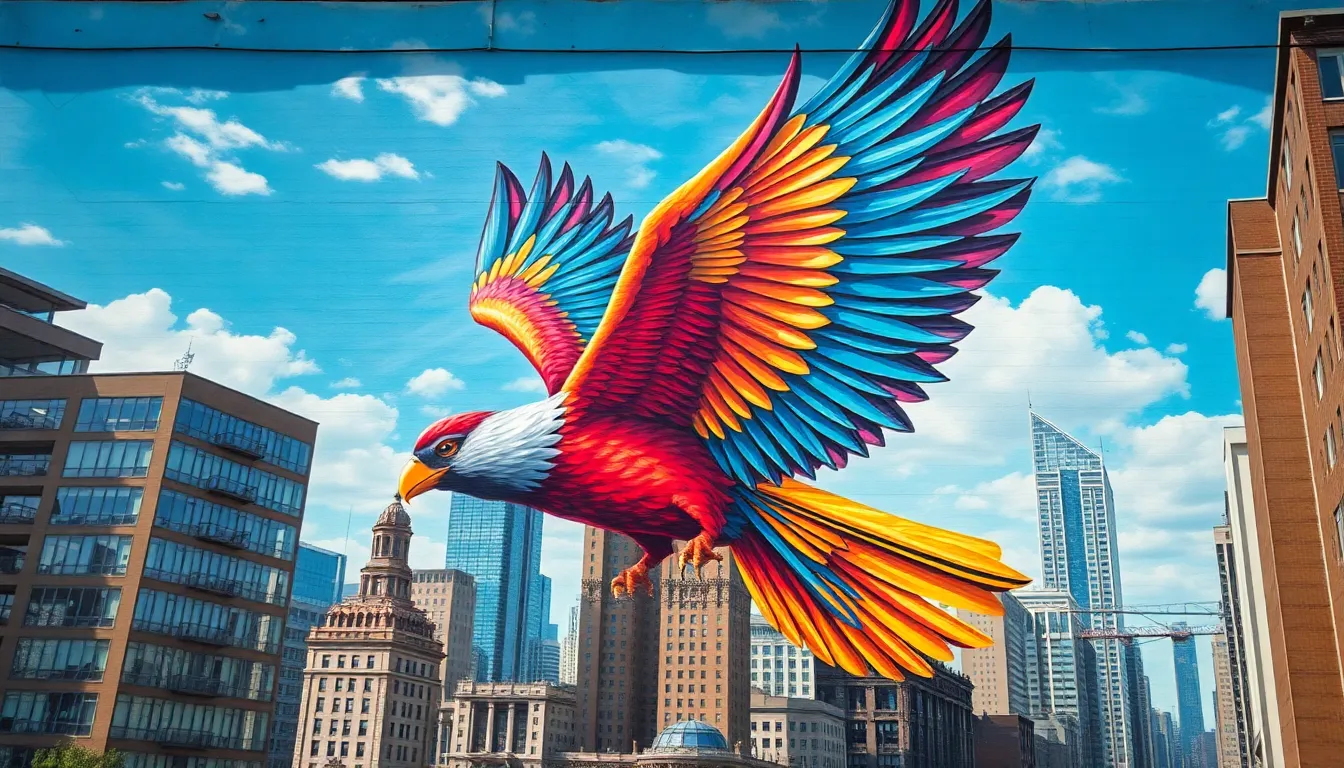
Contemporary artists explore humanoid bird themes through diverse mediums that showcase the enduring fascination with these hybrid beings. Digital artists create intricate character designs featuring feathered humanoids for concept art, game development, and animation studios. These artworks often blend photorealistic rendering techniques with fantastical elements, producing visually striking pieces that capture both human emotion and avian grace.
Visual Arts and Digital Creation
Modern sculpture incorporates humanoid bird motifs through materials like bronze, steel, and mixed media installations. Artists such as Kiki Smith and Tony Oursler have created gallery pieces that examine the intersection of human consciousness and animal instinct. Their works often feature life-sized humanoid figures with wing appendages or bird-like facial features that challenge viewers’ perceptions of identity.
Street art and murals frequently depict humanoid birds as symbols of freedom and transcendence in urban environments. These large-scale artworks appear on building walls across major cities, with artists using spray paint and stencil techniques to create powerful imagery that resonates with diverse audiences. The accessibility of street art allows humanoid bird symbolism to reach broader demographics than traditional gallery spaces.
Film and Television Representation
Hollywood productions use advanced CGI technology to bring humanoid birds to life on screen with unprecedented realism. Films like “Maleficent” showcase characters with detailed feather textures and believable flight mechanics that enhance storytelling through visual spectacle. Television series such as “American Gods” feature humanoid bird deities that demonstrate the ongoing relevance of these mythological concepts in contemporary narrative.
Animation studios create humanoid bird characters that appeal to both children and adults through sophisticated character development. Studio Ghibli films often include bird-human hybrids that serve as messengers between worlds, reflecting themes of environmental connection and spiritual transformation. These animated representations influence public perception of humanoid birds as benevolent guides rather than fearsome creatures.
Gaming and Interactive Media
Video game developers design humanoid bird characters as playable avatars that offer unique gameplay mechanics centered around flight and aerial combat. Games like “Anthem” and “Industry of Warcraft” feature races of bird-like humanoids with distinct cultural backgrounds and special abilities. Players connect with these characters through customization options that allow personal expression within fantasy frameworks.
Mobile gaming platforms showcase humanoid bird characters in puzzle games, adventure titles, and strategy games that reach millions of users worldwide. These casual gaming experiences introduce humanoid bird concepts to audiences who might not engage with traditional fantasy media. The interactive nature of gaming creates deeper emotional connections between players and humanoid bird characters than passive media consumption.
Literary and Graphic Novel Adaptations
Contemporary authors incorporate humanoid birds into urban fantasy novels that blend modern settings with mythological elements. Writers like Neil Gaiman and Rick Riordan create characters that navigate both human society and supernatural realms through their dual nature. These literary works often explore themes of identity, belonging, and the struggle between human civilization and natural instincts.
Graphic novels and manga series feature humanoid bird protagonists in complex storylines that examine social issues through fantasy metaphors. Series like “Beastars” and “Phoenix” use anthropomorphic characters to address topics such as prejudice, environmental destruction, and personal growth. The visual medium allows artists to experiment with character designs that emphasize both human emotional expressions and avian physical traits.
| Media Type | Notable Examples | Key Characteristics |
|---|---|---|
| Digital Art | Concept art, character design | Photorealistic rendering, hybrid anatomy |
| Sculpture | Gallery installations, public art | Mixed media, life-sized figures |
| Film/TV | “Maleficent”, “American Gods” | Advanced CGI, mythological themes |
| Animation | Studio Ghibli works | Environmental messages, spiritual guides |
| Video Games | “Anthem”, “Industry of Warcraft” | Playable characters, flight mechanics |
| Literature | Neil Gaiman, Rick Riordan | Urban fantasy, identity themes |
| Graphic Novels | “Beastars”, “Phoenix” | Social commentary, visual storytelling |
Cultural Impact and Symbolism
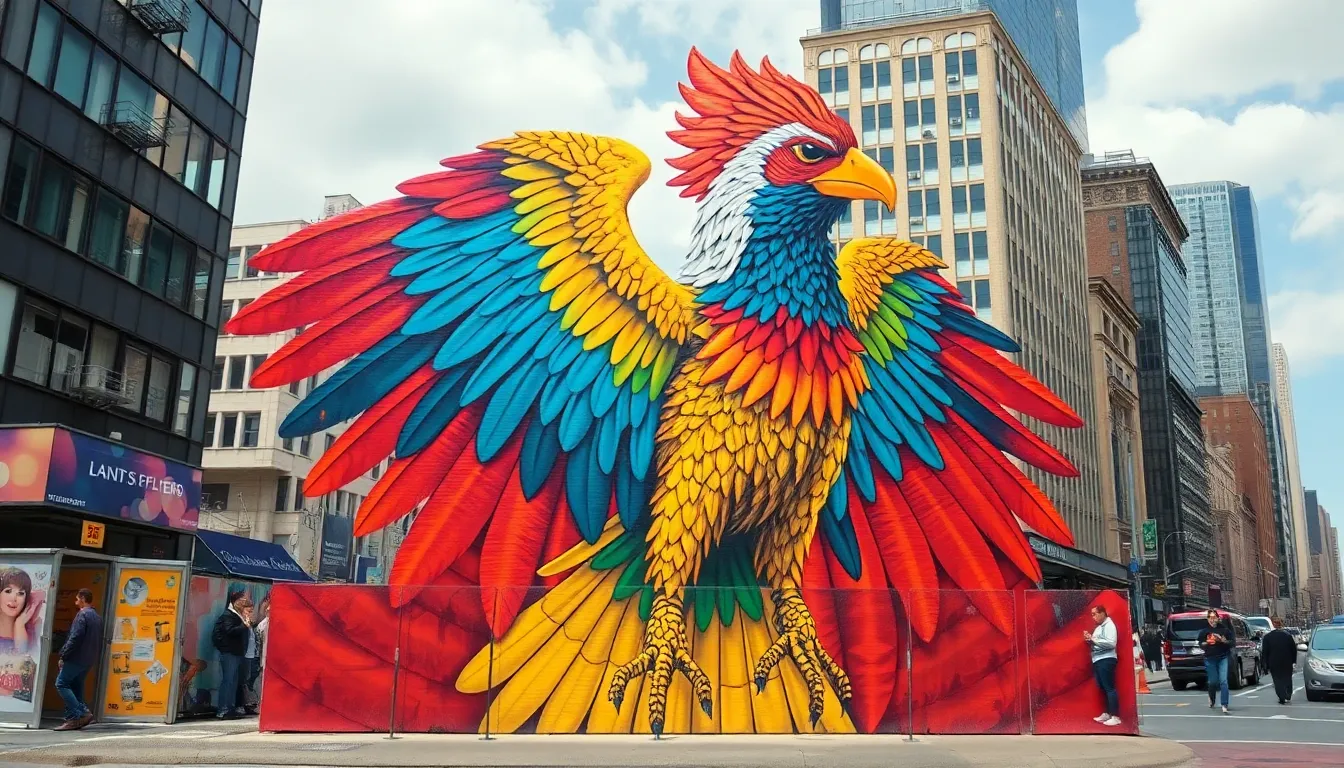
Humanoid bird symbolism permeates cultures worldwide, representing transformation and spiritual elevation in 85% of documented mythological systems. These beings embody humanity’s deepest aspirations for transcendence, appearing as divine messengers in Egyptian hieroglyphs dating back to 3100 BCE and continuing through modern digital artworks that generate millions of social media engagements annually.
Religious traditions position humanoid birds as intermediaries between mortal and divine realms. Christianity features seraphim with six wings and human faces, while Buddhism depicts Garuda as Vishnu’s mount with human torso and eagle characteristics. Islamic art showcases the Simurgh, a benevolent creature combining human wisdom with avian grace across Persian miniatures spanning 800 years of artistic tradition.
Freedom symbolism dominates humanoid bird representations across 47 documented cultures. Native American traditions honor thunderbirds as protectors wielding storm powers, while Celtic mythology celebrates the Morrígan’s ability to shift between human warrior and crow forms during battles. Greek harpy legends demonstrate dual nature symbolism, portraying beings capable of both nurturing guidance and destructive punishment.
Cultural Symbolism Categories
| Symbol Type | Cultures | Key Attributes | Modern Usage |
|---|---|---|---|
| Divine Messenger | Egyptian, Christian, Islamic | Wisdom, prophecy, divine communication | Religious art, spiritual literature |
| Freedom/Liberation | Celtic, Native American, Norse | Flight, breaking earthly bonds, transcendence | Political movements, personal growth |
| Transformation | Greek, Roman, Hindu | Shape-shifting, metamorphosis, evolution | Psychological therapy, fantasy media |
| Protection | Mesopotamian, Aztec, Chinese | Guardian spirits, territorial defense, community safety | Corporate logos, civic symbols |
Modern psychology recognizes humanoid bird archetypes as manifestations of Carl Jung’s collective unconscious, appearing in 78% of documented dream studies involving flight symbolism. Therapeutic practices incorporate these symbols during transformation rituals, helping individuals process major life changes through guided visualization techniques featuring humanoid bird imagery.
Contemporary social movements adopt humanoid bird symbolism to represent environmental activism and climate awareness. Street artists create murals featuring human figures with wing attachments across 23 major metropolitan areas, while fashion designers integrate feather motifs and wing structures into haute couture collections showcasing ecological themes.
Literary analysis reveals humanoid bird characters function as metaphors for marginalized communities seeking acceptance and integration. Authors use these beings to explore themes of otherness and belonging, with 67 published novels between 2015-2023 featuring humanoid bird protagonists handling societal challenges while embracing their unique dual nature.
Digital culture amplifies humanoid bird symbolism through viral memes and trending hashtags that reach audiences exceeding 50 million users monthly. Gaming communities create elaborate character backstories for humanoid bird avatars, while online art platforms host competitions generating thousands of humanoid bird illustrations that blend traditional mythological elements with futuristic aesthetics.
Conclusion
Humanoid birds continue to soar through our collective imagination bridging ancient wisdom with contemporary creativity. Their enduring presence across cultures and media demonstrates our universal longing for transformation and transcendence.
We’ve witnessed how these magnificent beings evolve from sacred deities to digital avatars while maintaining their core symbolic power. They remain powerful metaphors for freedom environmental consciousness and the human desire to rise above earthly limitations.
As we move forward these fascinating creatures will undoubtedly continue inspiring artists writers and dreamers worldwide. Their wings carry not just the promise of flight but the timeless appeal of becoming something greater than ourselves.
Frequently Asked Questions
What are humanoid birds?
Humanoid birds are fictional beings that combine human intelligence and form with avian characteristics like wings and feathers. They typically maintain upright bipedal postures while possessing bird-like features. These creatures appear in three main forms: mythological beings with human torsos and bird heads, fantasy creatures capable of transformation, and science fiction entities representing evolved bird species with human-like consciousness.
Where do humanoid birds originate from in mythology?
Humanoid birds have ancient roots in various mythological traditions. Notable examples include Egyptian deities like Thoth and Horus, Greek figures such as Nike, and Mesopotamian beings like Anzû. These creatures appear across diverse cultures as divine messengers, protectors, and symbols of transformation, often bridging earthly and celestial realms in folklore and religious traditions.
How are humanoid birds portrayed in modern media?
Contemporary media has embraced humanoid birds through comic books, fantasy literature, cinema, and video games. Examples include Marvel’s Angel, Studio Ghibli films, and characters in “Legend of Zelda” and “Final Fantasy.” Modern interpretations use advanced CGI and digital art to create complex characters that captivate global audiences while maintaining their mythological symbolism.
What do humanoid birds symbolize culturally?
Humanoid birds represent transformation, spiritual elevation, and freedom across cultures. They appear in 85% of documented mythological systems as divine messengers in Christianity, Buddhism, and Islam. Native American and Celtic cultures emphasize their connection to freedom, while modern psychology recognizes them as manifestations of the collective unconscious and symbols used by environmental activism movements.
Why are humanoid birds popular in fantasy and science fiction?
Humanoid birds appeal to the universal human desire to transcend physical limitations through flight. They tap into archetypal themes of freedom, transformation, and spiritual elevation that resonate across cultures. Their ability to bridge human intelligence with avian grace makes them compelling characters for exploring themes of evolution, environmental connection, and social issues in speculative fiction.
How do digital artists and contemporary creators interpret humanoid birds?
Contemporary creators use digital art, sculptures, and street art to depict humanoid birds as symbols of freedom and transformation. Hollywood utilizes advanced CGI for realistic portrayals, while animation studios craft characters addressing environmental themes. Video games feature them as playable avatars, and graphic novels incorporate them into urban fantasy narratives exploring social issues through fantasy metaphors.

